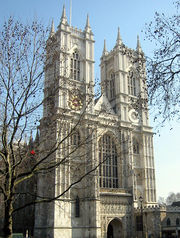Приглашаем к участию в проекте «300 ИнтелШкол-2013»
Great Britain
Great Britain consists of two main islands and a hundred of small ones. The population of Great Britain is about 17 millions people. London is a capital of the country with population about 9 millions people. The state language is British English. The climate is moderate thanks to the influence of sea. Britain in World War I
History of Britain The kingdom of Great Britain was formed by the Act of Union (1707) between England and Scotland. England (including the principality of Wales, annexed in the 14th century) and Scotland had been separate kingdoms since the early Middle Ages, but since 1603 the same monarch has ruled both lands. Only in 1707, however, did London become the capital of the entire island. Great Britain from then on had a single Parliament and a single system of national administration, taxation, and weights and measures. All tariff barriers within the island were ended. England and Scotland continued, however, to have separate traditions of law and separate established churchesthe Presbyterian in Scotland, the Anglican in England and Wales. For the history of the two countries before 1707, see Britain, Ancient; England; Scotland. Britain in World War I A British expeditionary force was immediately sent to France and helped stem the German advance at the Marne. Fighting on the Western Front soon became mired in a bloody stalemate amid muddy trenches, barbed wire, and machine-gun emplacements. Battles to push the Germans back failed repeatedly at the cost of tens of thousands of lives. Efforts to outflank the Central Powers (Germany, Austria, and Turkey) in the Balkans, as at Gallipoli (1915), failed also. At the Battle of Jutland (1916), the British prevented the German fleet from venturing into the North Sea and beyond, but German submarines threatened Britain with starvation early in 1917; merchant-ship convoys guarded by destroyers helped avert that danger. In May 1915 Asquiths Liberal ministry became a coalition of Liberals, Conservatives, and a few Labourites. Lloyd George became minister of munitions. Continued frustration with the nations inability to win the war, however, led to the replacement of Asquith by Lloyd George, heading a predominantly Conservative coalition, in December 1916. Problems in Ireland, chiefly the 1916 Easter rebellion, resulted in several hundred dead. By 1918 the annual budget was 13 times that of 1913; tax rates had risen fivefold, and the total national debt, fourteenfold. Although many Britons welcomed the end of czarist rule in Russia in 1917, they saw the Communist decision to make a separate peace with Germany as a sellout. Only the entry of the United States into the war made possible General Douglas Haigs successful tank offensive in the summer of 1918 and the German surrender in November. The election called immediately thereafter gave the Lloyd George coalition an overwhelming mandate. The Labour Party, now formally pledged to socialism, became the largest opposition party, while the Asquith wing of a divided Liberal Party was almost wiped out. By then the Reform Act of 1918 had granted the vote to all men over the age of 21 and all women over 30.
Sights of Great Britain
Trafalgar Square They say it is the most beautiful place in London. In the middle of it a monument to Admiral Nelson is situated. The monument includes four bronze lions. There are two fountains in it.Buckingham Palace It is a wonderful building. The Queen Victoria Memorial is in front of it. It takes you ten minutes to get from this building to Trafalgar Square, the centre of London. The Queen of Great Britain lives there.
London Tower It was a fortress, a palace, a prison and the King’s Zoo. Now it is a museum. You can see a lot of interesting things in the halls of this building. William the Conqueror built it in the eleventh century. Twelve back ravens live in it. People believe that London will be rich while the ravens live there.
Westminster Abbey It is more than nine hundred years old. There are many monuments and statues there, many English kings and queens are buried there. It is famous for the Poet’s Corner. It is one of the most famous and beautiful churches in London. This church has two tall towers.
The Houses of Parliament They are long grey buildings with towers. The large clock in one of the towers is “Big Ben”. You can hear the sound of “Big Ben” every hour in London The clock and the bell got their names after Sir Benjamin Hall. The members of the British Parliament work in these buildings.










